Many users cropped cameras often complain that it’s difficult to get a good picture from such a camera and that you must use full frame. Many people just drool on full-frame camerasthinking that they can do something improve their photos. And if you really want to shoot a full frame, and at the same time invest a little bag of money to purchase a camera, then this article is just for you.
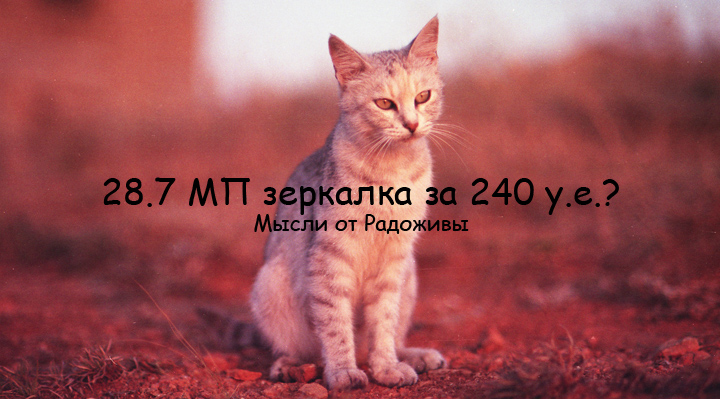
Shot on the same Full Frame :) 28 MP for 240 cu The cat is photographed in the sunset red sun.
Any good photography is based on the desire and skill of the photographer, everything else (including photographic equipment) is just a distraction from the main goal. I am often reproached for advocating to shoot with cheap equipment. I don’t actually do that, I advocate the idea that you can get a good shot from any camera if you want. Of course, the better the technique, the easier and faster the result can be achieved. Those who want to get good pictures get them from anyone, sometimes even the cheapest technique.
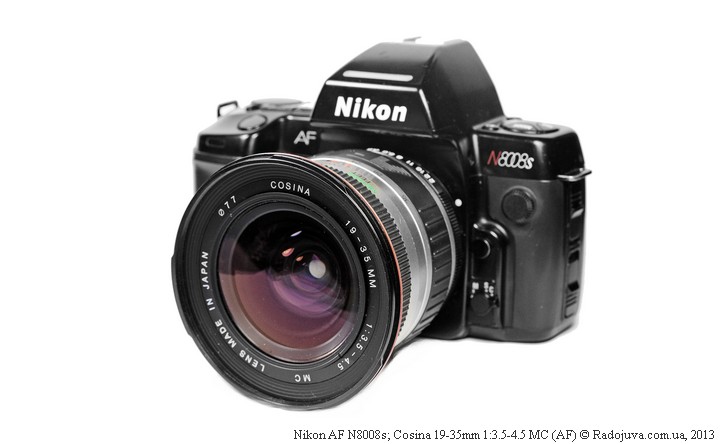
Actually, in this photo almost the whole essence of the article :)
Therefore, if there is a key aspect - desire, then for only 240 cu can:
Shoot with a full-frame SLR camera, with fast automatic focus, good serial shooting with a huge frame buffer, a huge optical viewfinder, nice controls and at the same time take pictures at 28 MP.
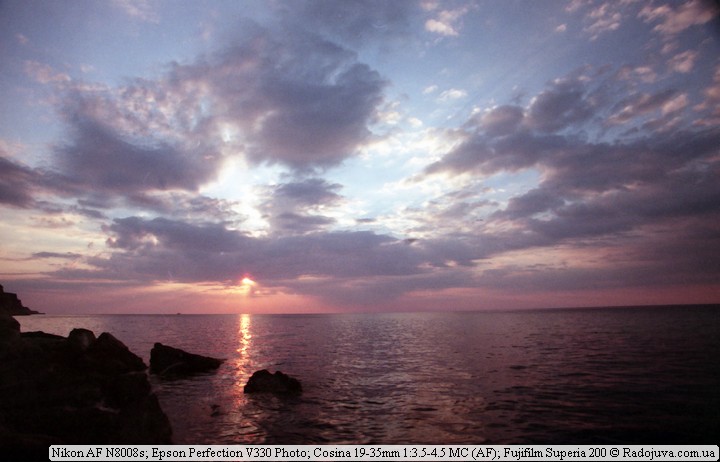
Example photo on my set. Sunset.
The secret is very simple - just use a film camera.
Many readers may think that the film camera is something terribly ancient, incomprehensible to manage, morally obsolete and unsuitable for use in the era of modern monsters Nikon D4 and Canon 1DX. In the expanses of the CIS countries such an impression people have it from the fact that in the Union and on its territory not a single SLR narrow-camera camera with automatic focus was released. Seriously, the old Zeniths do not cause any interest among young people, the main reason for which is the complete obsolescence of technology.
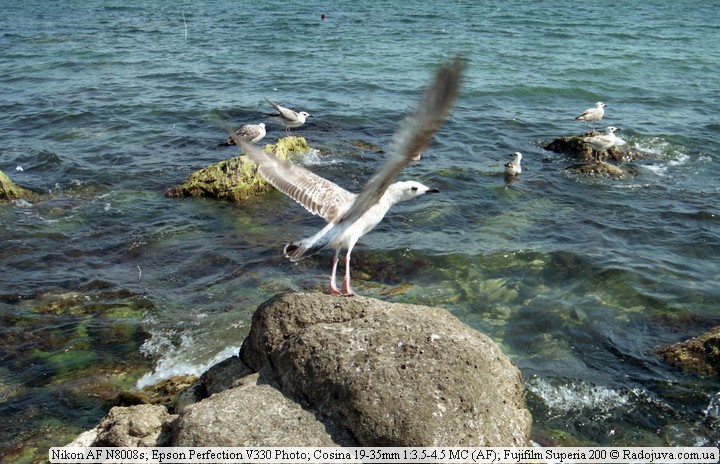
Example photo on my set. Gull
But in other countries long ago let out pretty autofocus analog volatile DSLRs with interchangeable lenses. Moreover, using such a SLR camera is no different from any modern amateur DSLR camera. Nikon D3200 or Canon 600D.
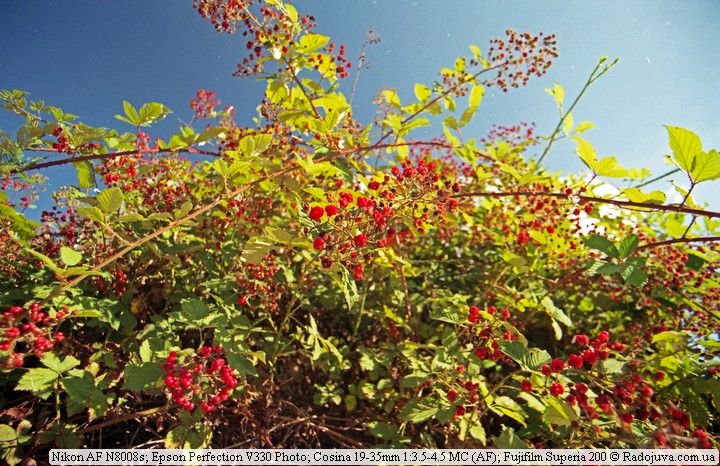
Example photo on my set. Forest Blackberry
I conducted an experiment, which cost me quite inexpensively, as a result of which this kit was assembled here:
- Nikon AF N8008s (also known as Nikon AF F801s) - 400 UAH
- Cosina MC 19-35mm 1: 3.5-4.5 (AF) - 700 UAH
- AA Batteries * 4 - 20 UAH
- 200-frame Fujifilm Superia 36 film roller - 27 UAH with free development
- Epson Perfection V330 Photo Scanner - 650 UAH
- Shipping of the camera, lens and scanner - 80 UAH
Total 1877 UAH or 235 cu In fact, I could save on the lens and batteries, since I have both. The camera, film roll and scanner cost me some 140 cu
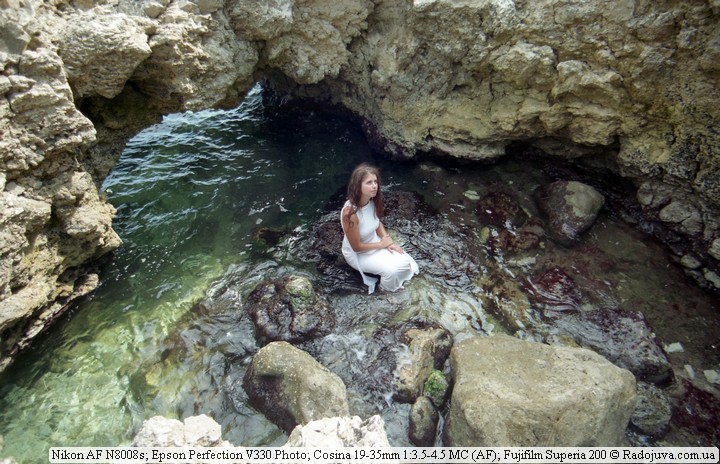
Example photo on my set. Among the stones
As a result, I got:
- A full-frame camera with a shooting speed of 3.3 frames per second. Some amateur cameras have approximately the same shooting speed. Nikon D80, D70s, D3000, D3100, and some professional CZK for 500 cu they shoot even slower, for example, Fujifilm Finepix S5 Pro.
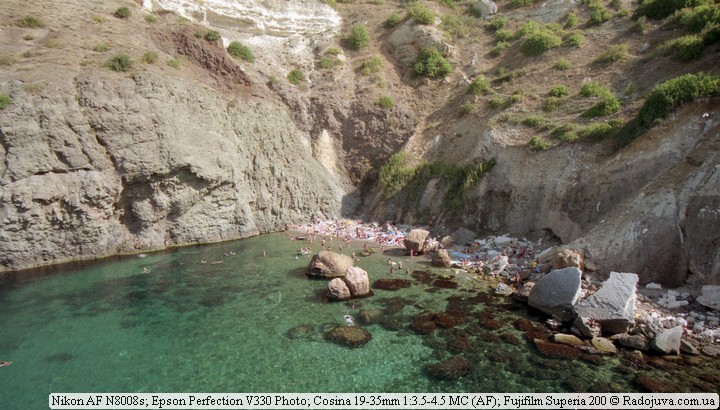
An example of a photo on a film camera. Beach.
- Maximum frame buffer makes 36 shots, for example, Nikon D7100 with the highest quality has frame buffer only 6 shots (RAW, 14-bit, lossless compression).
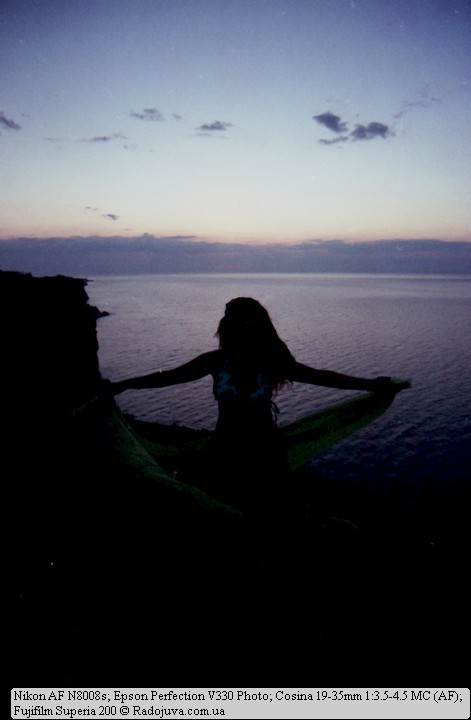
An example of a photo on a film camera. After sunset
- My camera can work out super short shutter speed equal to 1/8000 seconds, which even can not Nikon D600 и Canon 6D.
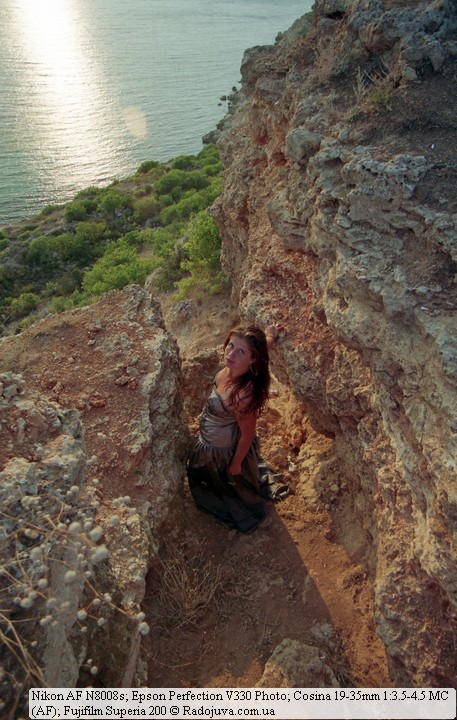
Example photo on my set. Among the stones
- A huge optical viewfinder that never dreamed Canon 70D for 1500 cu Yes, and in itself Nikon AF N8008s very good and durable camera.
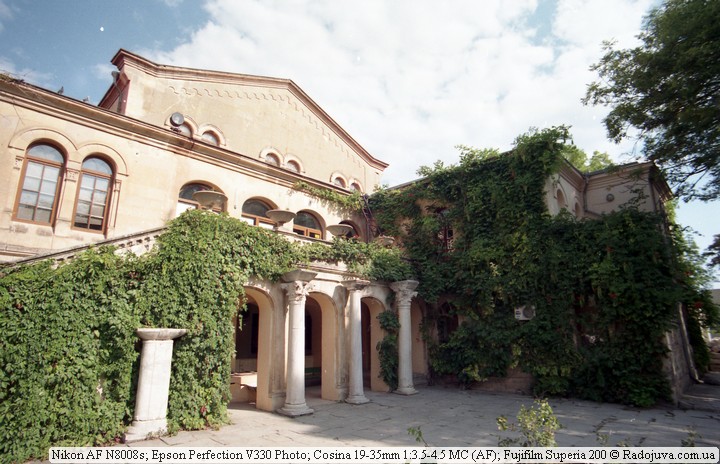
An example of a photo on a film camera. House overgrown with grapes.
- My Nikon AF N8008s it works easily with manual optics - it correctly measures exposure, has an electronic range finder, which very accurately tells about focusing. Even Nikon D5200 for 600 cu can't measure exposure with AI-S lenses.
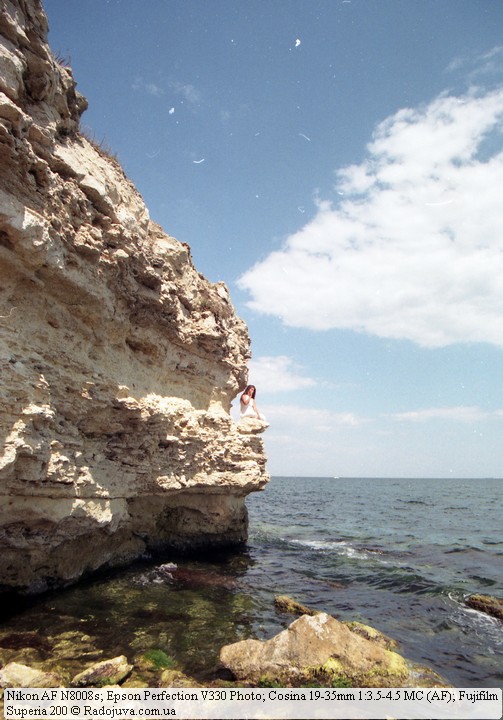
An example of a photo on a film camera. Sitting on the rocks.
- Very nice LCD in JVI, its brightness is physically (not electronically) dependent on the light source. The brighter the source - the brighter the LCD, which allows you to always clearly see the camera settings in JVI. For example, on many CZKs, I don’t see the LCD at all on a bright day or when shooting in backlight.
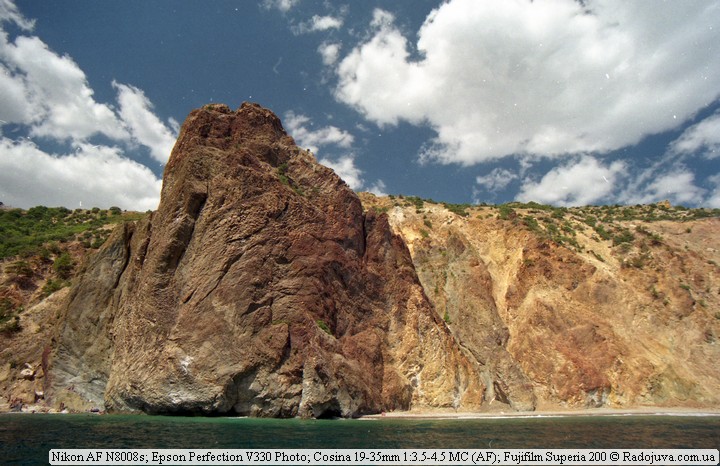
Example photo on my set. Photo from the boat
- Camera control is almost the same as that of any other Nikon CZK. When shooting, you don’t feel any difference, the whole setup is on a monochrome display.
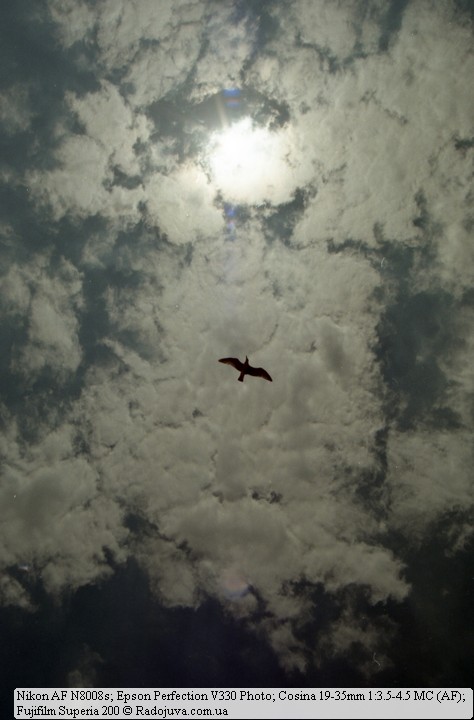
An example of a photo on a film camera. Gull
- Lens Cosina MC AF 19-35mm 1: 3.5-4.5 I just bought it for fun. 19mm at full frame can be safely attributed to an ultra-wide range of focal lengths. The lens focuses terribly fast, and with it you can create amazing pictures. To get the same viewing angle as this cheap lens gives out, on Nikon cropped cameras you should use the expensive Nikon 12-24mm F / 4.0.
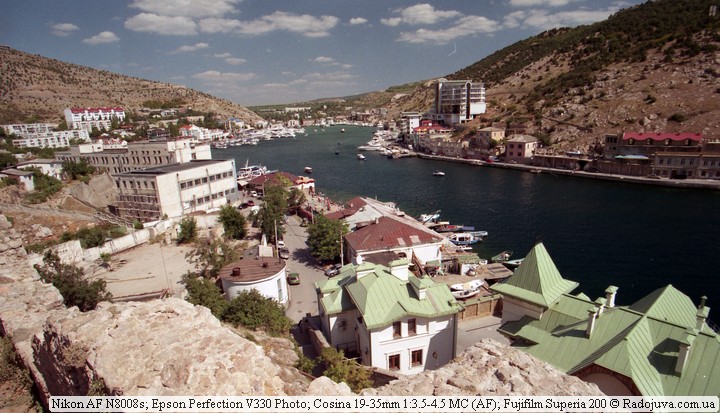
Example photo on a film camera
- A scanner in the house is also useful, for example, to digitize old photographs for an album. For example, you can scan your school diaries, and share old memories on social networks. In any case, the scanner will not be redundant.
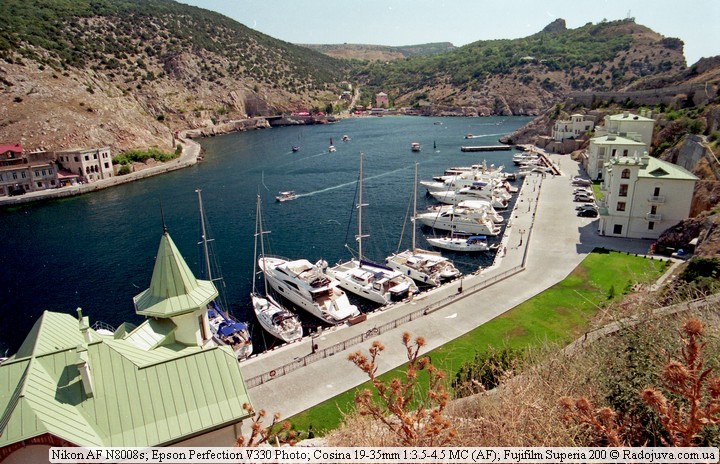
Example photo on my set. Yachts
- The scanner allows you to obtain images with 48-bit color depth. This means that each channel is encoded with 16 bits. Most 'cool modern cameras'can encode a channel using only 14 bits, and receive 42 bits at the output. Theoretically, with my scanner, you can get 64 times more shades than with any DCC.
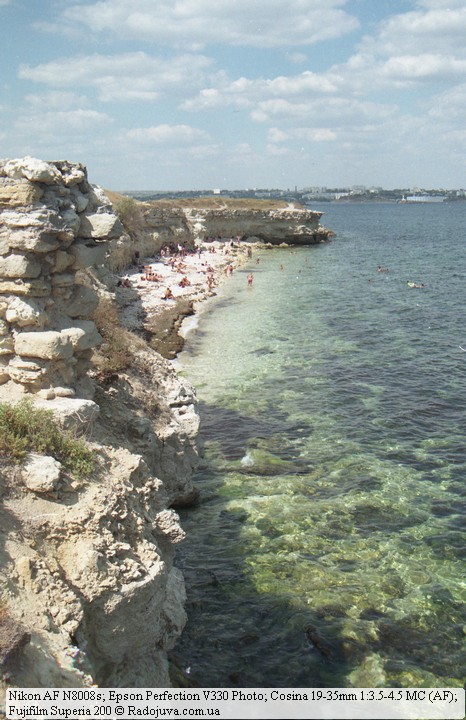
An example of a photo on a film camera. Shore
- Of course, my set has more disadvantages than advantages :), but I’ll keep silent about them in this article.
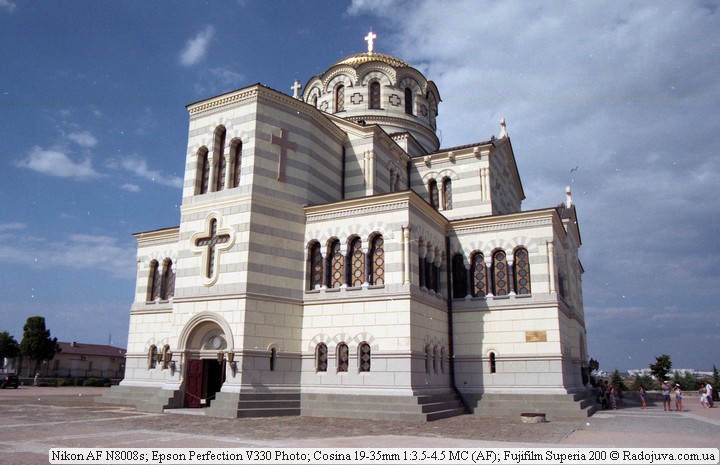
Example photo on my set. Temple in Chersonesos.
The following describes where I got 28 MP from the old film camera.
Of course, the 28MP figure in the article is a duck. But you can still get this figure in this way - the film has a physical frame size of 24mm * 36mm. Let's find the area of the film in square inches, since the parameters of the scanner are indicated in inches.
1 centimeter = 0.393700787 inches
1 square centimeter = 0.15500031000062 frame inches
1 square centimeter = 100 square millimeters
1 square millimeter = 0.0015500031000062 cpi
As a result, the film area is24mm * 36mm * 0.0015500031000062 = 1,339202678405357 sq. inch
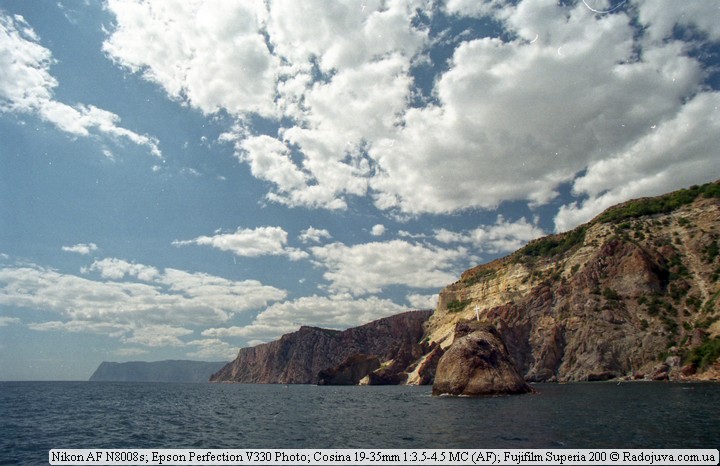
Example photo on my set. Landscape
The area of the film is 1,339202678405357 sq. inches. My scanner scans at 4800 pixels per inch, or 23 pixels per square inch. From 040 square inches of 000 pixels per square inch, 1,339202678405357 23 040 pixels are obtained, which is approximately equal to 000MP.
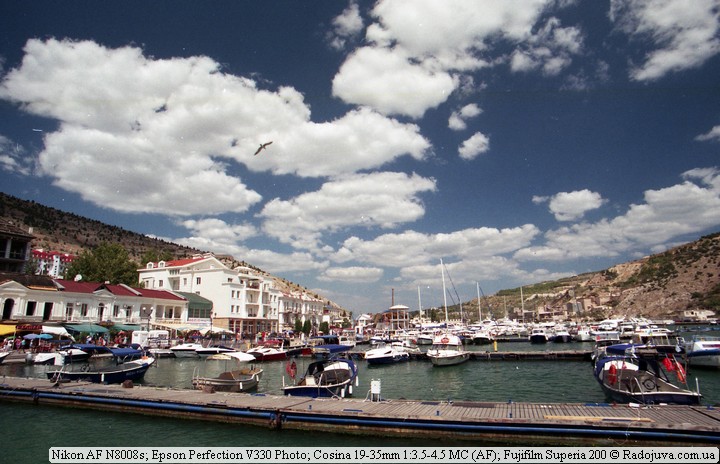
Example photo on my set. Balaclava
If your scanner has a different DPI, then the number of pixels when scanning a film frame can be calculated using the following simple formula:
DPI * DPI * 1,34
Some scanners in specifications have different DPI in height and width, for example, 4800 * 9600 is indicated in the specifications of my scanner. In fact, I can only scan at 4800 * 4800 or 9600 * 9600. The last option is half interpolation. The 'maximum possible DPI' is often indicated, for example 128000 is simply bloating the final image using a mathematical method of interpolating pixels, these numbers should not be paid attention to.
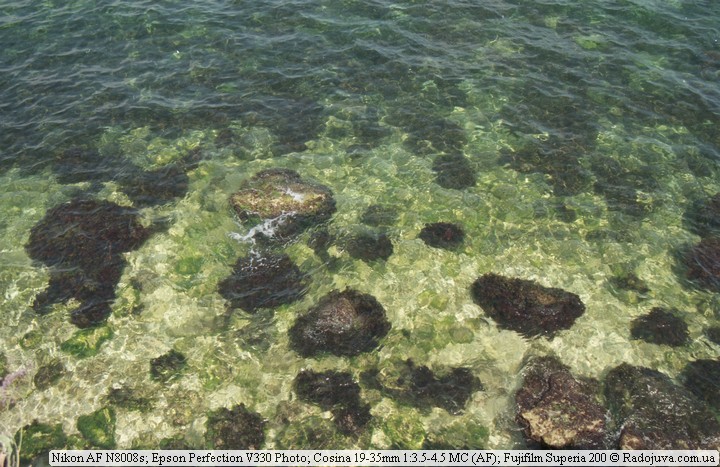
Example photo on my set. Near the shore
The simplest scanners with a slide adapter have 1200dpi, as a result, such a scanner can be squeezed out of one film shot:
1200 * 1200 * 1,34 = 1 929 600 (total about 2 MP)
I indicated '28MP camera' in the title of the article, since my Epson Perfection V330 Photo cuts off the edges of the frame a little when scanning and we end up with images not from the entire area of the film, but from a slightly smaller area. For example, a scanner often creates images like 6639 * 4319 pixels. Those who are chasing megapixels have already realized that from such a simple set you can squeeze these (or not these?) megapixels almost as much as Nikon D800 (a D800 costs almost 3000 cu).
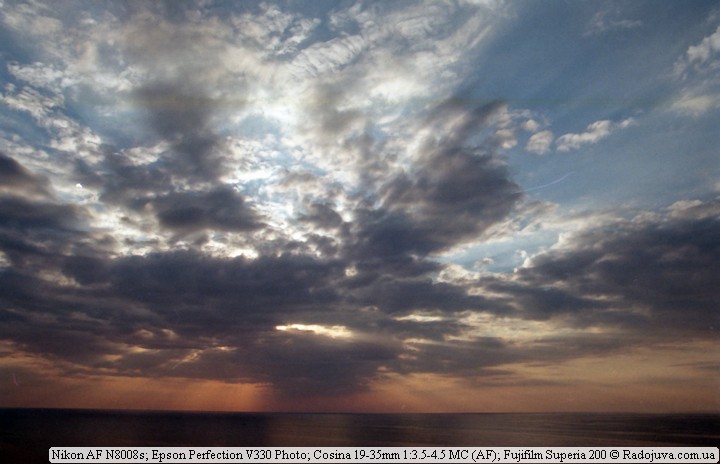
Example photo on my set. Another sunset
By itself, for serious work, such a set is no good. But the task before me was quite amateurish. For 240 cu I can enjoy a full-frame camera with convenient professional-grade control, an ultra-wide-angle lens that helped me out well on vacation and in addition I have a scanner that is convenient for scanning mail invoices :). I do not advocate fussing with a film camera, but once again I want to emphasize that there is absolutely no difficulty in working with a good analog camera. And instead of being discouraged that someone full frame, you can easily and simply shoot a full frame yourself.
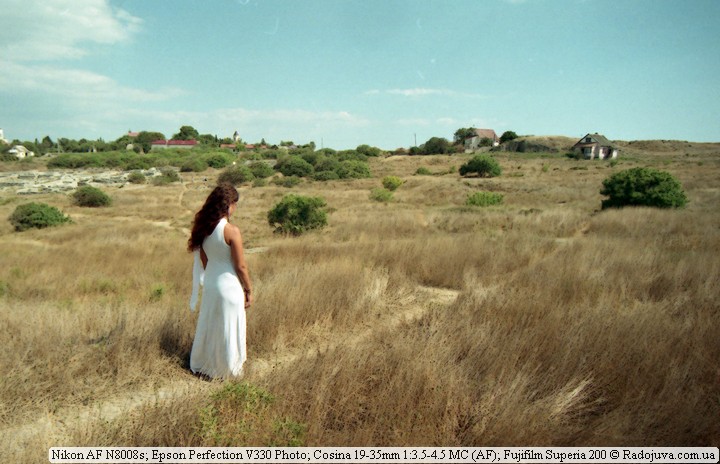
Example photo on my set. Road.
More sample photos (1400 pixels long)
Conclusions:
All of the above applies not only to my set. I brought my film set as real worldly example. Now buy used Nikon or Canon's autofocus analog camera is easy, the same goes for good-old lenses. The same story with the scanner.
Comments on this post do not require registration. Anyone can leave a comment. Many different photographic equipment can be found on AliExpress.
Material prepared Arkady Shapoval. Training/Consultations | Youtube | Facebook | Instagram | Twitter | Telegram















































I do not have a single comment in the reviews of a purely amateur segment and in general (like everyone from the outgoing generation ...) I do not accept the position of the “simpsons”, sometimes trying to bring some extracts from my humble experience and that's all ... Perhaps someone can avoid the wrong ones (on my opinion…) solutions.
I don’t shoot with a digital SLR just because I don’t have money for a digital SLR.
I bought my first Zenit-11 camera with the Helios MS 44M-4 lens for 220 UAH.
Now I have a Minolta XD-7 and MD Rokkor-X f1.7 50 mm. When photographing, you understand that what will turn out depends only on you, so there are no thoughtless photos at random. All good photos I print 10x15, the quality is naturally excellent. I printed several 20x30 photos - close (<40cm), the graininess of the image is noticeable. In conclusion: I really want a good digital SLR, let it be used, albeit with a small number of megapixels (8-14), but you immediately become independent of the photo lab (in which the film can be scratched through once, and in which you leave your money, and not a little). Because I am a student, my budget is limited to UAH 2-2,5 thousand (for example, I saved 2 months for a phone for 3 thousand). Can you advise something? It is desirable to have such a device that it would work quietly with manual lenses through a regular adapter without dandelion. I would be grateful for your advice.
I would buy a phone for 500-600, there would be more left on the device))
on slando to search for Pentax k and you will see a bunch of offers that fit your range
Yuriy - I think (from your initial conditions ...) it is possible to offer as the basic version of DSLR: FUJIFILM FinePix S3 Pro (from 150 ye ...), reserve S2 Pro (cheaper, but less than 8MP ...) At the same time, there is no (with your assignment ...) metering and only pure “M” mode, as well as a focusing guide using the built-in indicator ... It is extremely necessary (optional) to use a very accurate exposure meter or flash meter ... To use manual Nikon F or M42x1 lenses (with adapter KP-42 / N {without aiming at infinity}). Considering all these restrictions, this is an unacceptable perversion ...
The Sigma 17-50 mm f2.8 EX DC OS HSM for Nikon is very good for these cameras (but you have to save money ...)
Arkady, thanks for the idea - for a long time I want to shoot on film, and in parallel with digital, then roughly compare the results. But here the hands to Zenith, lying on the shelf well, somehow do not reach, I really want something more modern, but the thought of buying a used Nikon film (since I have a CZK and optics of this brand) somehow in my head did not come. Moreover, I bought a scanner with a slide module for a long time, just what to scan old films ...
I read the article and “fired up”. Found a Nikon F65 in our city, what can you tell us about this device? From the characteristics I do not like the power supply - from CR2, but they say that they are enough for a very long time.
Nikon F65 is slightly above the basic level, but if you avoid mistakes, its capabilities will allow you to get pictures above average (for handheld shooting - it has one of the “quietest” pops ...). The plastic case is somewhat weak (it is advisable to check for alignment and requires an additional grip for heavy optics in order to counteract misalignment ...) Well, and a fairly budgetary common resource ...
Thanks for the reply.
Tell me, then, how to check the alignment - at the CZK this process is known and was carried out when purchasing optics, but on film, it's hard for me to imagine ...
There are a lot of testing methods - the most accurate (with a master with a colimator ...); -the coarsest one (for the coincidence of aiming at infinity in the viewfinder and the sharpness of the image on fine matte glass, precisely applied to the film guides in the frame window at a fully open aperture of the fastest lens ... [usually with the help of an enlarging film viewer ...]); - photographing the ruler at an angle (30-45 degrees) to compare the exact aiming and the deviation of the actual point of sharpness on the ruler on the film or on the print (preferably for short and medium distances up to 2m) with an open aperture ... - Instrumentally using an accurate depth gauge from a charged films to the plane of the mount in the area of the lens axis 46,5 mm with a possible minus 0,02-0,05; and so on (everything can be found in net ...).
The last paragraph describes the check of the working distance - a prerequisite for all checks (seasonal temperature influence on the linear expansion of plastic significantly affects the result ...) With an exact working distance, the adjustment is carried out by changing the angle of inclination of the mirror (by changing the position of the eccentrics - hex keys ...).
Adjustment of the flange distance - in case of deviation, it is carried out by selection of calibrating washers under the bayonet ... The absence of an inclination of the lens axis is also checked using an accurate depth gauge ... (a single measurement value, but at the corners of the frame ...).
Wow, how many nuances!
About eccentrics - in the course.
When I tried to buy a fifty-fifty F / 1.4 for my D5100, it turned out that he had tangible back focus (I tried five copies of the lenses). There is no official service involved in the adjustment in the city, those that are do not guarantee a successful result.
Hands seem to grow from where, but before that, the Central Control Commission never disassembled, it was a little scary. I rummaged in nete, I decided to move the AF sensor, and not the eccentrics (because when adjusting the eccentrics, the accuracy of the AF at the peripheral points may go astray). From the second attempt everything turned out, everything seems to be ok.
Everything written above is only because of second hand (the device is not from scratch ...) and it is not known whether it was subjected to post-serial adjustment ...
Forgot to indicate - Upper eccentric autofocus, lower manual.
During my many years of practice, I have never used peripheral focusing points, although many of my cameras have had them for about thirty years ...
But how then to focus on the subject, if it is not in the center of the frame?
When the aperture is open, if you focus using the center point and then change the frame boundaries, the subject "falls out" of focus.
The central zone is located in the zone of maximum sharpness of the lens (the most accurate aiming ...) - and when the focus is locked for framing, the distance to the aiming object remains unchanged ... These dozens of focus points are only for dynamic reporting and video ...
This is an erroneous opinion. Details can be found here. https://radojuva.com.ua/2013/10/focus-i-love-you-i-ll-kill-you/
The physical meaning of the peak of sharpness is its location one-third behind the front edge of the depth of field (or two-thirds in front of the back ...). And the most important thing is that DOF is not a zone between two planes, but is an area between the sectors of the radii of the front and rear boundaries of the spheres, cut off by the frame boundaries ... And above it really is a wicked opinion.
Do not complicate. The point is that under certain conditions, focusing gets confused when reflowing. And the method of focusing on a single point with subsequent cropping from part is an archaism, which is often promoted by users of film technology who have not mastered the transition to new types and possibilities of working with the focusing system.
Is it possible to prove it in a few words about: (“… under certain conditions, when rearranging, the focus gets lost.”) By the way, in your tests there are a lot of overshoots in sharpness ...
Actually, in the article to which I gave the link everything is described, just read carefully :)
Always these three points: 1) I am right; 2) I am always right; 3) If, I am not right, then we pass to the first point ... - “I have been familiar with the material of your link for a long time ... And there was no particular desire to object or deny (far from the truth, and even more so in the last instance ...) I think that you you yourself still need to experiment with focusing (for correct aiming - it is important to understand and take into account the physical dimensions of the depth of field ... by inscribing the plot in this zone, and not just clicking a suitable peripheral point ...). Although the specificity of the reportage forces - to smear because of the lack of time.
I understand that we’ve moved off the topic :) By the way, you are constantly throwing links to various resources here, it would be nice to see your work somewhere.
The first autofocus EOS CANON had an integrated focusing mode, taking into account the near and far points (in my DEP ...), and for ten years this mode was supplied to all EOS, except the tops (the professionals themselves understood what was what ...) But the rate of fire led to the abolition of this regime for the ignorant - and now everyone is driving "fuel oil".
Again go away from the topic of the question-request)
Commercial photographers have no reason to publish their works without the consent of the customer ... And we don't work at exhibitions ...
Over the years of your work, is there really no permission even for 10 current jobs? Usually schoolboys unsubscribe by such excuses :)
Unflashed landscapes are 4-5 times more expensive (sold together with the rights to them ...), and the demonstration of a portfolio is generally excluded - I say this, like a schoolboy of the "fifties" ... I do not need to set up a booth with a personal website - there is already enough work ... D1x, with side sync contact, on Czechoslovak flashes of the professional studio "Compactron" (full set ...) is synchronized up to 1/3000 ... (flash pulse duration is 1/100 ...)
The fact that the "fifties" does not do honor. I think at least there should be publications in magazines, photo reports from exhibitions, in the end there should at least be the name of the photographer. It is such a thing that I have dozens of pages of your comments on my site, and I seriously doubted some of your statements. After not wanting to share your own pictures, I have no choice but to treat everything written with extreme disbelief.
All processing from digital cameras and scanners - on a computer absolutely always disconnected from net ... Storage both in films and on filmed full disks ... For orientation, a special thumbnail disk ...
Not everyone strives for absolute fame, and especially in our troubled tax time ...
yes, a computer disconnected from the Internet 400 comments on Radozhiva :) everything is clear with you :)
What I wanted to confirm or deny on your site (I will not test your limitless patience any longer ...) I wish you good luck! And my time has come - oh my! All victories over the limit of improvement ... and a better life ... !!!
Thank you)
Correspondence from the laptop ...
Urgently bring to the ward measures and weights! http://lurkmore.to/_/5453#mws_8jedND7
here, too, got NIKON F 801 happy as an elephant. the camera is just class, it feels like it's made for professionals
People, speaking of scanners and their fantastic resolutions, do not forget about film - it is capable of displaying about 10 megapixels (color) and 30 megapixels (black and white). Scanning a 9MP image at 28MP won't get any better.